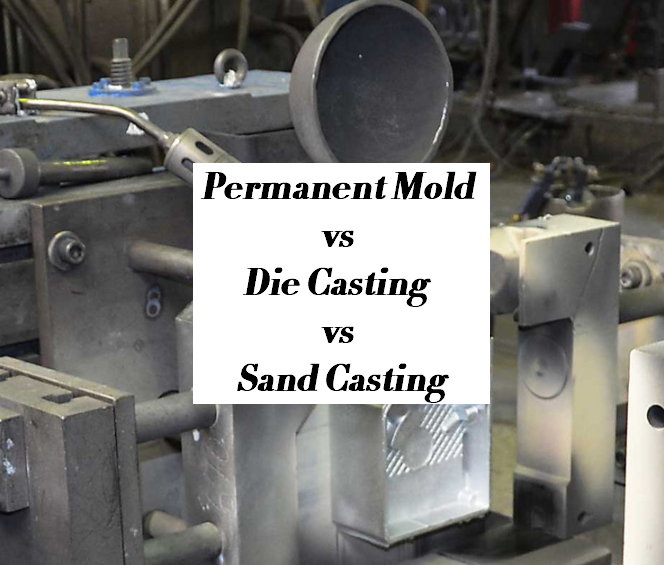Understanding the Distinctions Between Permanent Mold Casting and Die Casting from robert gilchrist's blog
When it comes to choosing the right casting process for your needs, it is essential to consider various factors, including design requirements and economic considerations. Among the methods used for producing near-net-shape aluminum parts, sand casting, permanent mold casting, and die casting are the primary options. However, there is often confusion surrounding the differences between permanent mold casting and die casting. In this article, we will explore these casting methods, highlighting the advantages of each process.

Permanent Mold Casting vs. Die Casting:
Both permanent mold casting and die casting employ steel molds to create a cavity that holds the molten aluminum as it solidifies. This use of molds sets them apart from sand casting, where a new cavity is formed in sand for each cycle. The steel molds in permanent mold and die casting are protected by die coatings to withstand the abrasive nature of molten metal.
The main distinction between these two methods lies in how the molten metal enters the mold. In permanent mold casting, the metal flows into the cavity from a reservoir, with a gate controlling the flow rate to minimize turbulence. Typically, the die is designed to fill from the bottom or side, with the riser positioned at the highest point. Once the metal fills the mold, it is allowed to solidify before the mold is opened, and the part is removed. Internal features such as galleries can be created by placing inserts into the mold before closure.
On the other hand, die casting involves forcing the molten metal into the cavity under pressure, resembling the process of plastic injection molding. Similar to permanent mold casting, the mold opens after the metal solidifies, and the cast forms are extracted.
Advantages of Die Casting:
Superior Surface Finish: Die casting offers an excellent as-cast surface finish, often surpassing 125 microinches. This high-quality finish may require little to no secondary machining or finishing.
Tight Geometric Tolerances: Die casting allows for the production of parts with very precise geometric tolerances, including thin walls.
Faster Process: Die casting is faster than permanent mold casting when it comes to producing parts, making it advantageous for longer production runs and helping to lower unit costs.
Space Efficiency: Die casting equipment typically requires less floor space compared to permanent mold casting equipment, which can help reduce overhead costs.
Advantages of Permanent Mold Casting:
Cost-Effective Tooling: Permanent mold dies are generally less complex and less expensive than those required for die casting.
Surface Finish: The surface finish achieved in permanent mold casting falls within the range of 125 to 300 microinches, often eliminating the need for secondary machining.
Reduced Porosity: Permanent mold casting results in fewer porosity issues compared to die casting, leading to higher yields of finished parts.
Enhanced Strength: Parts produced through permanent mold casting tend to exhibit higher strength properties.
Considerations for Volume and Part Characteristics:
When determining the appropriate casting method, it is essential to consider production volume and specific part characteristics. Die casting is well-suited for larger quantities, as its speed and accuracy result in thinner walls and smoother surfaces. Permanent mold casting, while slightly slower, offers cost advantages in terms of tooling and yields stronger parts with reduced porosity.
Consulting with Casting Specialists:
If you require aluminum castings, seeking the expertise of specialists such as LeClaire Manufacturing can greatly assist you. As specialists in permanent mold and sand casting, they can guide you through the process selection, assist with tooling design, and efficiently produce your parts. Additionally, their experience may even lead to design suggestions that improve the quality and cost-effectiveness of your components.
Understanding the distinctions between permanent mold casting and die casting is crucial for selecting the most suitable casting method for your specific requirements. Both processes offer unique advantages in terms of surface finish, tolerances, production speed, and cost considerations. By consulting with casting specialists and considering factors such as production volume and part characteristics, you can make an informed decision and optimize your casting process for success.
Read more:
Permanent Mold Casting vs Die Casting vs Sand Casting | What is Permanent Mold Casting

The Wall